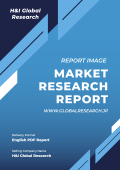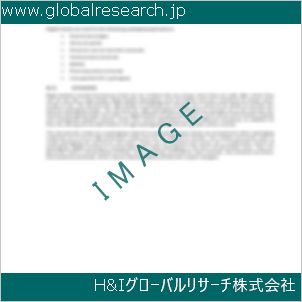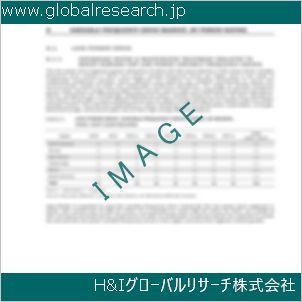1 Isopentyldiol Market Overview
1.1 Product Definition
1.2 Isopentyldiol Segment by Type
1.2.1 Global Isopentyldiol Market Value Growth Rate Analysis by Type 2022 VS 2029
1.2.2 Cosmetic Grade Isopentyldiol
1.2.3 Others
1.3 Isopentyldiol Segment by Application
1.3.1 Global Isopentyldiol Market Value Growth Rate Analysis by Application: 2022 VS 2029
1.3.2 Hair Care
1.3.3 Skin Care
1.3.4 Cosmetics
1.3.5 Others
1.4 Global Market Growth Prospects
1.4.1 Global Isopentyldiol Production Value Estimates and Forecasts (2018-2029)
1.4.2 Global Isopentyldiol Production Capacity Estimates and Forecasts (2018-2029)
1.4.3 Global Isopentyldiol Production Estimates and Forecasts (2018-2029)
1.4.4 Global Isopentyldiol Market Average Price Estimates and Forecasts (2018-2029)
1.5 Assumptions and Limitations
2 Market Competition by Manufacturers
2.1 Global Isopentyldiol Production Market Share by Manufacturers (2018-2023)
2.2 Global Isopentyldiol Production Value Market Share by Manufacturers (2018-2023)
2.3 Global Key Players of Isopentyldiol, Industry Ranking, 2021 VS 2022 VS 2023
2.4 Global Isopentyldiol Market Share by Company Type (Tier 1, Tier 2 and Tier 3)
2.5 Global Isopentyldiol Average Price by Manufacturers (2018-2023)
2.6 Global Key Manufacturers of Isopentyldiol, Manufacturing Base Distribution and Headquarters
2.7 Global Key Manufacturers of Isopentyldiol, Product Offered and Application
2.8 Global Key Manufacturers of Isopentyldiol, Date of Enter into This Industry
2.9 Isopentyldiol Market Competitive Situation and Trends
2.9.1 Isopentyldiol Market Concentration Rate
2.9.2 Global 5 and 10 Largest Isopentyldiol Players Market Share by Revenue
2.10 Mergers & Acquisitions, Expansion
3 Isopentyldiol Production by Region
3.1 Global Isopentyldiol Production Value Estimates and Forecasts by Region: 2018 VS 2022 VS 2029
3.2 Global Isopentyldiol Production Value by Region (2018-2029)
3.2.1 Global Isopentyldiol Production Value Market Share by Region (2018-2023)
3.2.2 Global Forecasted Production Value of Isopentyldiol by Region (2024-2029)
3.3 Global Isopentyldiol Production Estimates and Forecasts by Region: 2018 VS 2022 VS 2029
3.4 Global Isopentyldiol Production by Region (2018-2029)
3.4.1 Global Isopentyldiol Production Market Share by Region (2018-2023)
3.4.2 Global Forecasted Production of Isopentyldiol by Region (2024-2029)
3.5 Global Isopentyldiol Market Price Analysis by Region (2018-2023)
3.6 Global Isopentyldiol Production and Value, Year-over-Year Growth
3.6.1 Japan Isopentyldiol Production Value Estimates and Forecasts (2018-2029)
4 Isopentyldiol Consumption by Region
4.1 Global Isopentyldiol Consumption Estimates and Forecasts by Region: 2018 VS 2022 VS 2029
4.2 Global Isopentyldiol Consumption by Region (2018-2029)
4.2.1 Global Isopentyldiol Consumption by Region (2018-2023)
4.2.2 Global Isopentyldiol Forecasted Consumption by Region (2024-2029)
4.3 North America
4.3.1 North America Isopentyldiol Consumption Growth Rate by Country: 2018 VS 2022 VS 2029
4.3.2 North America Isopentyldiol Consumption by Country (2018-2029)
4.3.3 United States
4.3.4 Canada
4.4 Europe
4.4.1 Europe Isopentyldiol Consumption Growth Rate by Country: 2018 VS 2022 VS 2029
4.4.2 Europe Isopentyldiol Consumption by Country (2018-2029)
4.4.3 Germany
4.4.4 France
4.4.5 U.K.
4.4.6 Italy
4.4.7 Russia
4.5 Asia Pacific
4.5.1 Asia Pacific Isopentyldiol Consumption Growth Rate by Region: 2018 VS 2022 VS 2029
4.5.2 Asia Pacific Isopentyldiol Consumption by Region (2018-2029)
4.5.3 China
4.5.4 Japan
4.5.5 South Korea
4.5.6 China Taiwan
4.5.7 Southeast Asia
4.5.8 India
4.6 Latin America, Middle East & Africa
4.6.1 Latin America, Middle East & Africa Isopentyldiol Consumption Growth Rate by Country: 2018 VS 2022 VS 2029
4.6.2 Latin America, Middle East & Africa Isopentyldiol Consumption by Country (2018-2029)
4.6.3 Mexico
4.6.4 Brazil
4.6.5 Turkey
5 Segment by Type
5.1 Global Isopentyldiol Production by Type (2018-2029)
5.1.1 Global Isopentyldiol Production by Type (2018-2023)
5.1.2 Global Isopentyldiol Production by Type (2024-2029)
5.1.3 Global Isopentyldiol Production Market Share by Type (2018-2029)
5.2 Global Isopentyldiol Production Value by Type (2018-2029)
5.2.1 Global Isopentyldiol Production Value by Type (2018-2023)
5.2.2 Global Isopentyldiol Production Value by Type (2024-2029)
5.2.3 Global Isopentyldiol Production Value Market Share by Type (2018-2029)
5.3 Global Isopentyldiol Price by Type (2018-2029)
6 Segment by Application
6.1 Global Isopentyldiol Production by Application (2018-2029)
6.1.1 Global Isopentyldiol Production by Application (2018-2023)
6.1.2 Global Isopentyldiol Production by Application (2024-2029)
6.1.3 Global Isopentyldiol Production Market Share by Application (2018-2029)
6.2 Global Isopentyldiol Production Value by Application (2018-2029)
6.2.1 Global Isopentyldiol Production Value by Application (2018-2023)
6.2.2 Global Isopentyldiol Production Value by Application (2024-2029)
6.2.3 Global Isopentyldiol Production Value Market Share by Application (2018-2029)
6.3 Global Isopentyldiol Price by Application (2018-2029)
7 Key Companies Profiled
7.1 Kuraray
7.1.1 Kuraray Isopentyldiol Corporation Information
7.1.2 Kuraray Isopentyldiol Product Portfolio
7.1.3 Kuraray Isopentyldiol Production, Value, Price and Gross Margin (2018-2023)
7.1.4 Kuraray Main Business and Markets Served
7.1.5 Kuraray Recent Developments/Updates
8 Industry Chain and Sales Channels Analysis
8.1 Isopentyldiol Industry Chain Analysis
8.2 Isopentyldiol Key Raw Materials
8.2.1 Key Raw Materials
8.2.2 Raw Materials Key Suppliers
8.3 Isopentyldiol Production Mode & Process
8.4 Isopentyldiol Sales and Marketing
8.4.1 Isopentyldiol Sales Channels
8.4.2 Isopentyldiol Distributors
8.5 Isopentyldiol Customers
9 Isopentyldiol Market Dynamics
9.1 Isopentyldiol Industry Trends
9.2 Isopentyldiol Market Drivers
9.3 Isopentyldiol Market Challenges
9.4 Isopentyldiol Market Restraints
10 Research Finding and Conclusion
11 Methodology and Data Source
11.1 Methodology/Research Approach
11.1.1 Research Programs/Design
11.1.2 Market Size Estimation
11.1.3 Market Breakdown and Data Triangulation
11.2 Data Source
11.2.1 Secondary Sources
11.2.2 Primary Sources
11.3 Author List
11.4 Disclaimer
| ※参考情報 イソペンチルジオールは、化学的には2-メチル-2-ペンタノールと呼ばれる化合物です。分子式はC5H12Oです。これは、オールアルコールというカテゴリに属する化合物であり、分子内に二つの水酸基(-OH基)を持つため、ジオールと呼ばれています。イソペンチルジオールは、特にさまざまな化学製品や製造プロセスで重要な役割を果たしています。 イソペンチルジオールの特徴として、最も注目すべき点はその化学的安定性と反応性のバランスです。この化合物は、常温常圧で液体の形態を持ち、無色透明で、わずかに甘い香りを持っています。また、極性溶媒としての特性を有しているため、さまざまな有機化合物と混合することが可能です。これにより、イソペンチルジオールは多くの工業プロセスにおいて副産物や中間体として使用されます。 イソペンチルジオールは主に化学の合成中間体として利用されます。一例として、ポリウレタン、エポキシ樹脂、および塗料の合成において重要な役割を果たしています。これらの用途から、イソペンチルジオールはフィルム形成剤、柔軟剤、接着剤、さらには化粧品の成分としても利用されています。また、その抗菌特性や保湿特性から、スキンケア製品やヘアケア製品での利用も増加しています。 さまざまな種類のイソペンチルジオールがありますが、一般的には特定の構造異性体や製造プロセスによって分類されます。これにより、異なる物理的・化学的性質を持つ製品が得られることが可能となります。例えば、特定の合成プロセスを使用することで、イソペンチルジオールの純度や分子量を調整することができ、これによってその用途や製品特性が大きく変わることがあります。 最近では、環境への配慮からバイオベースのイソペンチルジオールの開発も進められています。従来の石油化学プロセスに比べて、植物原料を使用することで持続可能性が向上し、二酸化炭素排出量の削減にも寄与することが期待されています。このような新しいアプローチは、企業のサステナビリティ戦略に合わせた製品開発において重要な要素となっています。 また、イソペンチルジオールに関する関連技術も進展しています。たとえば、高効率な合成ルートの開発や、精製技術の向上、さらには新たな応用開発が進行中です。これにより、イソペンチルジオールの生産コストが削減され、より多くの産業における需要に応じた利用が可能となるでしょう。 今後、イソペンチルジオールの需要はさらに増加することが予想されます。その理由としては、さまざまな産業における材料の革新、特に持続可能な材料としての需要が高まっているためです。例えば、建設業界では、環境に配慮した新しい材料の開発が進められており、イソペンチルジオールはその中で重要な役割を果たす可能性があります。 このように、イソペンチルジオールは多様な用途を持つ重要な化学物質であり、今後の技術革新や市場のニーズに応じて、その応用範囲は拡大していくことでしょう。化学産業の発展とともに、この物質が持つ特性や可能性が引き出され、新しい製品やサービスが生まれることを期待しています。企業や研究者が連携し、イソペンチルジオールのさらなる利用方法を探求することが、これからの持続可能な社会の形成に貢献する重要な一歩となるでしょう。 |
❖ 免責事項 ❖
http://www.globalresearch.jp/disclaimer












